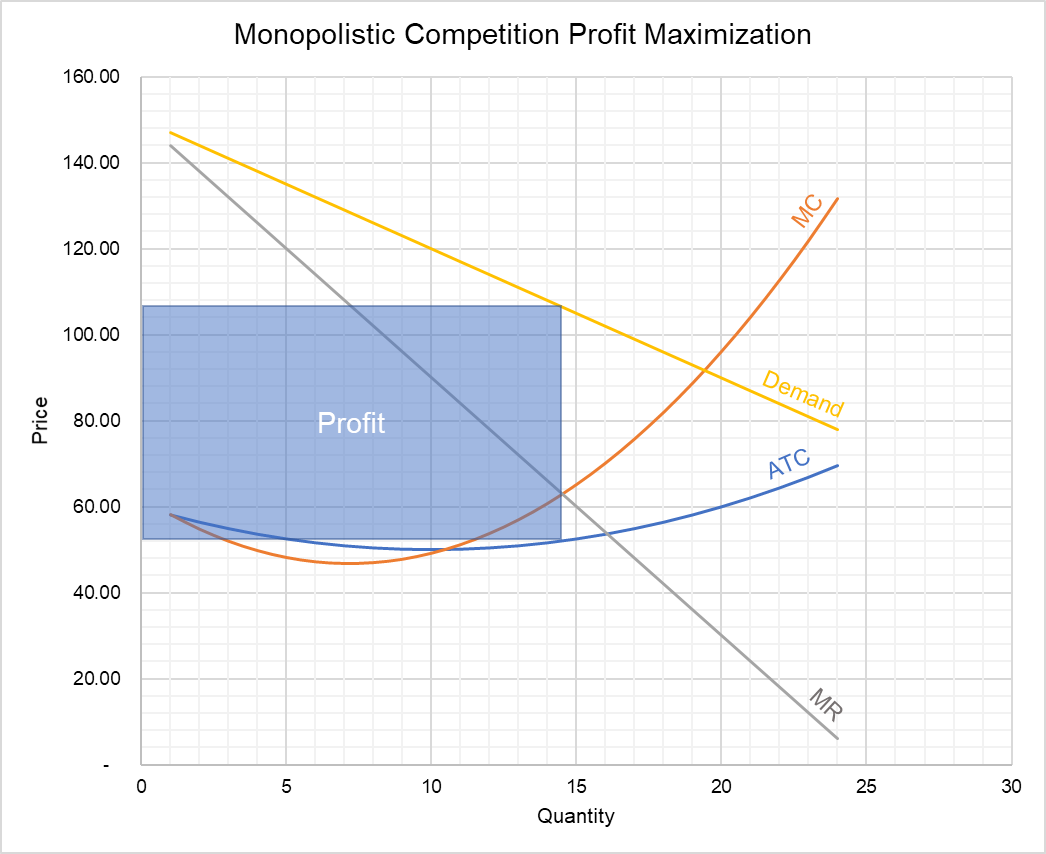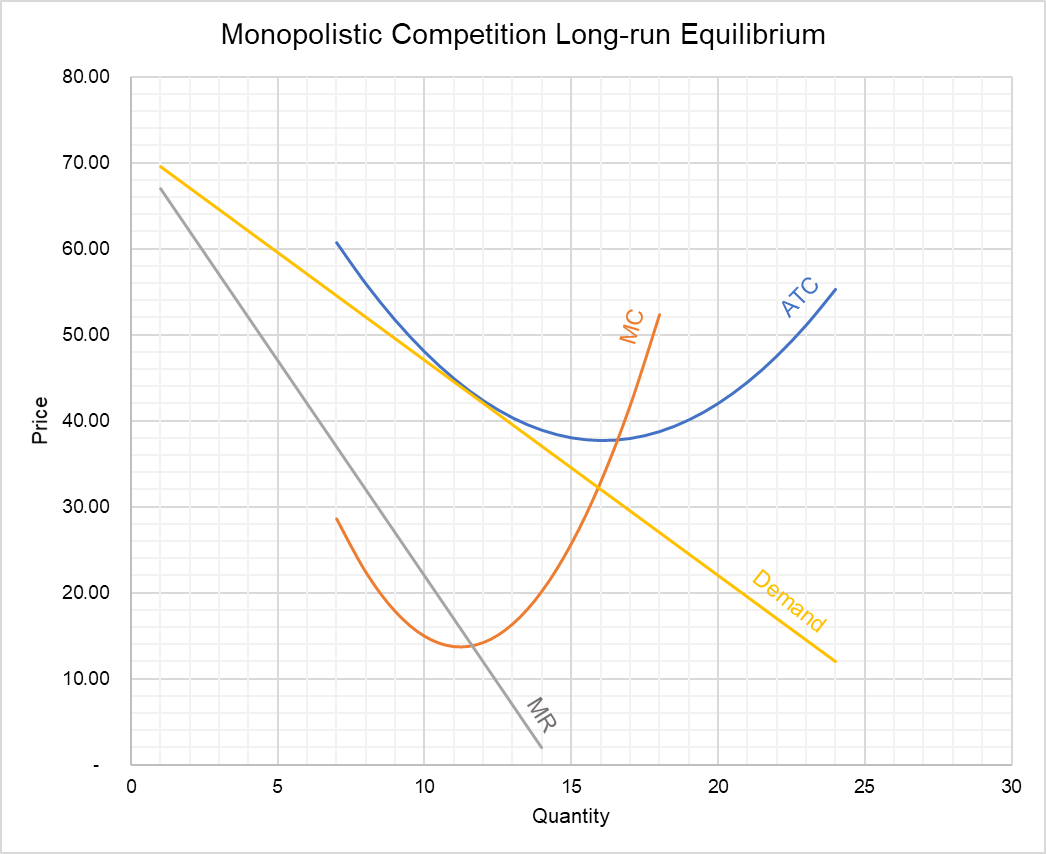Monopolistic Competition
Monopolistic competition is a type of imperfect competition market structure in which a large number of firms produce differentiated products and there are no barriers to entry.
Monopolistic competition is monopolistic in the sense that due to product differentiation each firm has some market power because due to its differentiated products even if it increases its price, its competitors can’t capture all of its market share. But monopolistic competition is also competitive because there are no barriers to entry and if the existing firms earn positive economic profits, new firms can enter the market easily thereby decreasing the market power of existing firms.
Markets which exhibit monopolistic competition include restaurants, hospitals, small retail outlets, etc.
Profit Maximization in Monopolistic Competition
The demand curve facing a firm in monopolistic competition is downward-sloping. It is because due to the differentiated nature of products, they are not perfect substitutes for each other. This gives each firm some ability to set its own price.
The demand curve relevant to each firm in a monopolistic competition is called residual demand curve, a demand curve which shows the demand for product of one particular firm. A residual demand curve is flatter than the market demand curve because individual firm demand is more elastic than market demand. Residual demand curve is also to the left of market demand curve because individual demand is lower than the market demand.
A firm in monopolistic competition can maximize its profit by producing an output at which its marginal revenue is equal to its marginal cost. The profit that a monopolistically-competitive firm can earn in the short-run equals (P – ATC) × Q. The following graph shows short-run profit maximization in monopolistic competition.

The blue shaded area represents the profit earned by a firm in monopolistic competition in the short-run.
Long-run Equilibrium
But since there are no barriers to entry or exit, new firms will enter the market such that the residual demand curve of each firm will be shifted inwards until it touches the average total cost curve.

In the graph above, MR = MC at close to 12 units at which point the demand curve of the firm is tangent to the average total cost curve. Since price and average total cost are equal at the profit-maximizing output, there is no positive economic profit in the model in long-run.
The important point to note is that the profit-maximizing output doesn’t happen at the minimum point of the average total cost. It shows that monopolistic competition doesn’t lead to perfectly-competitive outcome even in the long-run. There is always some associated inefficiency.
Monopolistic Competition vs Other Market Structures
Monopolistic competition differes from other market structures as follows:
Monopolistic Competition vs Oligopoly
Monopolistic competition differs from oligopoly in that there is very weak interdependence between output levels of different firms. An oligopoly can have a homogeneous product or a differentiated product, but a monopolistic competition always has a differentiated product. Further, there are no barriers to entry in monopolistic competition but strong barriers in case of an oligopoly.
Monopolistic Competition vs Perfect Competition
The difference between perfect competition and monopolistic competition lies in the nature of demand curve and the nature of product. While a perfectly-competitive market has a homogeneous product, monopolistic competition applies in case of differentiated product. Further, a firm in monopolistic competition faces a downward-sloping demand curve but a perfectly-competitive firm faces a horizontal demand curve.
Monopolistic Competition vs Monopoly
Perfect competition differs from monopoly on account of barriers to entry, nature of product and market power. First, there are no barriers to entry in monopolistic competition but high barriers in a monopoly. Second, there are many differentiated products in a monopolistic competition but only a single product in a monopoly. Third, even though firms in monopolistic competition have certain market power, it is very low when compared to monopoly power.
by Obaidullah Jan, ACA, CFA and last modified on